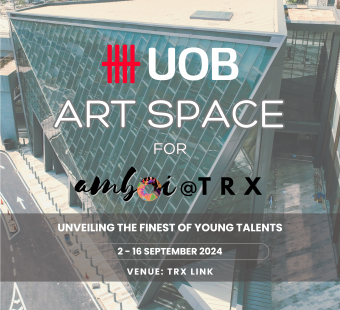Some of the most beautiful Chinese temples grace Malaysia’s capital and together they tell a story of heterogeneity and harmony within Chinese culture.
Diverse communities
The Chan See Shu Yuen Temple started out for families with the surnames Chan, Chen or Tan, before evolving into a significant place of worship for Buddhists. Today, the temple serves a dual function as a shrine and community centre.
The temple was built between 1897 and 1906, and modelled after the Chan Clan Ancestral Hall in Xi Guan, Guangzhou, China. The temple’s three main deities are positioned behind a glass wall and the clan founders are depicted at the central altar of the temple.
The building is rather elaborate, with an intricately carved roof, gables and terracotta friezes depicting mythological scenes and monumental chapters in Chinese history. The pillars in the main hall are also adorned with scenes of gold-painted warriors battling lions, dragons and other fantastical creatures.
The largest Chinese subgroup in Malaysia is the Hokkien, and they built many houses of worship throughout the country. One of the oldest and most charming in KL is the 140-year-old Kuan Yin Temple in the historical Merdeka quarter of the city.
The temple was originally built in 1880 as a place of spiritual comfort for visitors, where Stadium Merdeka stands now. In 1911, a monk known as Kwang Tung arrived from Fuzhou, China, to bless the temple and designate it a holy place for the worship of Kuan Yin, the Goddess of Mercy.
Featuring distinctly Chinese and European baroque architecture, the temple is one of the most colourful shrines in the city. It is marked by three golden statues: the Shakyamuni (Gautama Buddha), the South Sea Guanyin, which sports a flashing halo, and the Qianshou Guanyin.
Multi-layered beliefs
Perhaps the temple with the most intimate connection to local history is the Sin Sze Si Ya Temple located close to Central Market. It was built by legendary Chinese Kapitan Yap Ah Loy, a key figure in the early development of Kuala Lumpur, for the two patron deities Sin Sze Ya and Si Sze Ya, whom he believed helped guide him during the Selangor Civil War.
The Sin Sze Si Ya is considered the oldest Taoist temple in KL, and functions as a cultural centre for the city’s Chinese community. The temple comprises the main prayer hall and two smaller side halls with open-air pavilions and intricately carved panels. Its rather unusual position behind several shophouses is believed to have been determined by feng shui, creating an unusual angle of the walls arches and stairways.
To commemorate its close relationship to the city’s history, the temple entrance features a memorial plaque in honour of some of KL’s founding fathers, Chan Sow Lin, Yap Ah Shak, Yap Ah Loy and Yap Kwan Seng.
The largest Chinese temple in Kuala Lumpur is the Thean Hou Buddhist temple, with its stunning six-tiered structure. The temple was built in 1894, by KL’s Hainanese community, principally to commemorate Tian Hou, a goddess that protects fishermen. The complex also incorporates the statues of Shui Wei Sheng Niang, the Goddess of the Waterfront, Guan Yin, the Goddess of Mercy, Guan Di, the God of War popular in Taoism, as well as Wei Tuo, the devoted guardian of Buddhist monasteries, bringing elements of Buddhism, Taoism and Confucianism into its grandiose architecture.
Also known as the Temple of the Goddess of Heaven, Thean Hou’s unique attractions include a medicinal herb garden, tortoise pond and sacred Bodhi tree. Its multi-arched entrance gateway features red pillars, which symbolise prosperity and good fortune.
Jalan Tun HS Lee, one of the earliest and most important commercial thoroughfares in KL’s history, boasts a large and diverse number of Chinese and Indian temples, all along one street. Fittingly, one of the most popular Taoists shrines is situated here, namely, the Guan Di Temple, built in 1888, to honour Guan Di, the Taoist God of War and Literature.
The temple is marked by its signature bright orange façade, with colourful dragons coiled around its two main pillars, serving as protective symbols to ward off negative energy. Inside the temple is the statue of Guan Di, flanked by his godson Guan Ping and bearer Zhou Cang. It is the only temple in KL to have wooden statues of deities.
The temple is also home to replicas of Guan Di’s weapons, including a famous 59kg copper sword (guan dao) and spear (guan jie). Taoist devotees believe that by touching or lifting it, the guan dao has the powers to bless, protect or turn their luck around.
Reflecting the characteristic diversity of beliefs within many Chinese temples, the shrine complex also features other deities, namely Choy Sun, God of Prosperity, Guan Yin, Goddess of Mercy, and Wen Chong, God of Education and Learning.
---









